The Sphinx and the Great Pyramids: A Link in History
The Sphinx and the Great Pyramids have been around for thousands of years, and yet still remain shrouded in mystery. To this day, historians are still trying to unravel the secrets behind these two ancient monuments. But what could the mysterious Sphinx and the Great Pyramids have in common? Read on to find out the answer
Exploring the Ancient Myth of the Sphinx
The Sphinx is one of the most famous and enigmatic monuments in the world. The ancient Egyptians believed that the Sphinx was a creature with the body of a lion and the head of a woman. The Sphinx is thought to have been built around 2500 BC, and it is one of the oldest monuments in Egypt.
The Sphinx is located near the Giza Necropolis, which is one of the most important archaeological sites in Egypt. The Giza Necropolis is home to many ancient Egyptian monuments, including the Great Pyramids of Giza. The Great Pyramids are among the oldest and largest pyramids in the world.
The Sphinx is thought to have been built as a tribute to Pharaoh Khufu, who was one of the most powerful rulers in ancient Egypt. The Sphinx is thought to have been built over 4,500 years ago, and it is one of the oldest monuments in Egypt.
Understanding the Significance of Sphinxes in Egyptian Culture
The ancient Egyptians were extremely religious people, and their mythology and beliefs reflected this. One of the most famous examples of this is the story of the Sphinx. The Sphinx is a giant stone statue with a human face on one side and an animal head on the other. It stands just east of the Giza pyramids, beside what was once known as the Queen’s Causeway.
The origins of the Sphinx are unknown, but it is believed to have been constructed during the Old Kingdom period in around 2500 BC. The features on its face may represent different aspects of life such as birth, beauty, strength and wisdom. Over time, it became associated with death and evil because occasional killings were committed near it to celebrate Pharaoh’s victories over his enemies. Eventually, however, people came to see the Sphinx as a protector instead of an enemy. Today, tourists visit it to learn more about ancient Egyptian culture
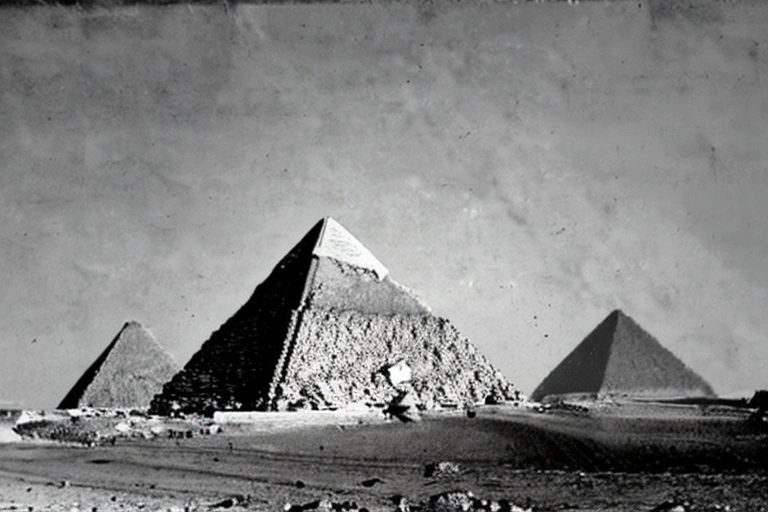
The History and Development of the Great Pyramids
The Great Pyramids of Giza are one of the most famous and popular tourist destinations in Egypt. Built over 4,500 years ago, these pyramids are among the oldest and largest constructed structures in the world. While many people know about the Sphinx – a statue that is well-known for its enigmatic facial features and lion’s body few know about other aspects of Egyptian culture that share a link to these great pyramids.
Legend has it that the Sphinx was built by Pharaoh Khufu (circa 2551 – 2528 BC) as a tribute to his mother, Queen Hetepheres I. It is said that she demanded a monument be built to represent her in perpetuity, so Khufu commissioned builders to create this incredible structure. The limestone blocks used in construction were quarried from nearby hillsides and had to be transported over long distances on heavy wooden sleds. Today, visitors can see evidence of these ancient methods of transportation throughout the complex.
The Great Pyramids have been an important part of Egyptian culture for centuries and continue to play an important role today. The colossal size and unique design of these pyramids make them symbols of power and wealth both within Egypt and abroad. Not only are they some of the earliest structures ever built, but they also remain one of the most iconic attractions in all of Egypt
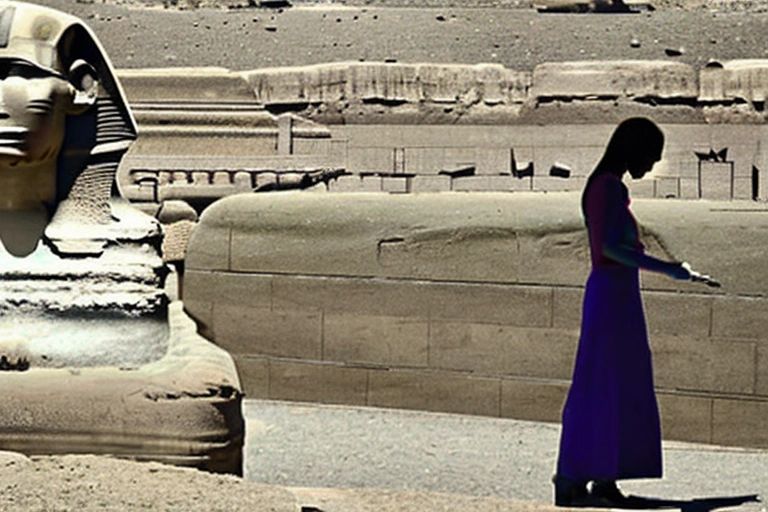
Seeking Clues to Uncovering Off-Shoot Religious Beliefs Connected to Sphinx Statuettes
The great Sphinx has long been a popular tourist attraction in Egypt, with visitors from all over the world eager to see its monumental features. But what could be the hidden meaning behind these enigmatic monuments?
Despite years of research and analysis, no one can say conclusively what sort of religious beliefs may have been associated with the ancient sphinxes. Some believe that they may have symbolized water sources, or were even related to funerary rituals – but there’s still much mystery surrounding this enigmatic monument.

Analyzing Different Locations Where You Can Visit a Real-Life, Onsite Replica or Original
If you’re looking for a place to visit that will leave you feeling both mystified and awestruck, you should consider visiting one of the many sphinxes located throughout Egypt. The enigmatic creatures have been associated with wisdom and power for centuries, and their imposing figures can be found in many different locations around the country.
If you’re interested in visiting a replica or original sphinx, your best bet is to head to Giza. This location is home to the largest and most famous sphinx, and it’s also where the first pyramids were built. If you’re looking to explore more of Egypt’s ancient sites, Giza is a great place to start.
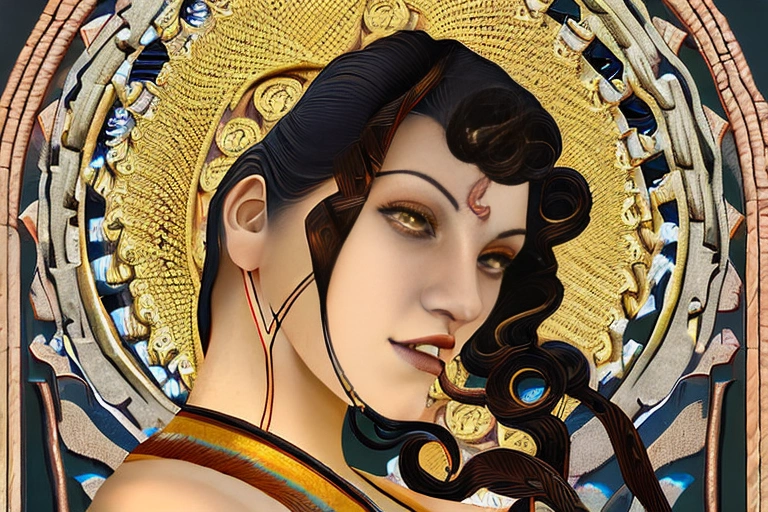
Examining Carvings on Sun Temples That Also Feature These Distinctive Figures
Ancient Egyptian History and Religion
The carvings on the sun temples of ancient Egypt depict sphinxes and other strange creatures, some with human heads and others with animals. What function did these figures have in ancient Egyptian religious beliefs?
The presence of sphinxes at sun temples may have had something to do with their connections to the god Horus. The first temple dedicated to Horus was built at Edfu, about 2800 BC. The entrance featured a large bas-relief carving of a falcon-headed god surrounded by several sphinxes (a creature that’s sometimes shown as part of Horus’ retinue). It’s possible that these creatures were associated with the deity because they were common in Upper Egypt, where Horus was believed to originate. Alternatively, the sphinxes may have been associated with Horus because they were considered to be guardians of the sun.
The carvings on sun temples also depict other creatures that have distinctive features. One example is a creature with the head of a human and the body of a lion. This creature is known as the leonine sphinx, and it may have been associated with the god Seth. Another figure that appears frequently on sun temples is a serpent-headed god called Apophis. Some scholars believe that Apophis was associated with death, and that the serpent on his head was meant to represent his deadly power.
The Origins of the Sphinx and its Meaning
Though thought to be thousands of years old, the origins of the Sphinx are still a mystery. Some believe that it is one of the oldest carved monuments on Earth, dating back to at least 2600 BC. The sphinx has long been associated with wisdom and strength, and many believe that its enigmatic features represent some sort of pre-historic warning or symbol. Some historians suggest that it may have first served as a funerary gateway for Pharaohs in ancient Egypt, and was later used as a mastaba tomb marker by their pharaohs’ successors. Whatever its origins, there is no doubt that the sphinx has left an indelible mark on history.
Exploration and Preservation of the Great Pyramids
The Great Pyramids of Giza, located in present-day Egypt, are one of the Seven Wonders of the Ancient World. The Sphinx is a carving on one side of the pyramid that was commissioned by Pharaoh Khufu and completed circa 2540 BC. The sphinx is regarded as an emblem of Egyptian civilization and its mythical origins are unknown. However, some believe it may represent a lioness or other protective goddess.
Since antiquity, the sphinx has inspired fascination and awe among visitors to the site. Some carvings on ancient sun temples also feature these distinctive figures, including those at Rurikenji in Japan (605-710 AD) and Santorini in Greece (1624-1566 BC). The sun temples served as a place of worship for the early Japanese and Greek civilizations, and were used for outdoor ceremonies and festivals.
Today, many of these carvings are undergoing restoration or preservation efforts. For example, the Rurikenji sphinx is under reconstruction to repair fire damage that occurred in 2007. Santorini’s octagonal temple complex is also being restored after significant natural disasters in 2008 and 2012 damaged sections of the building. These projects rely on funding from government agencies and private donors, so it is important to continue raising awareness about their importance in preserving ancient culture.
Connecting the Great Pyramids to the Sphinx
The great sphinxes of Giza stand as powerful symbols of both ancient Egyptian art and architecture. These monolithic sculptures are evidence of a civilization that was once incredibly advanced, but they are also associated with one mystery in particular: their connection to the great pyramids of Giza.
Built at around 2600 BC, the great pyramids were some of the first monumental structures ever constructed. They remain an awe-inspiring sight today, despite being partially eroded over time. What is even more mysterious about these majestic structures is the fact that they feature two nearly identical sphinxes (or Sphinxes) carved into their sides. The question many people have asked for centuries is why these statues were placed here, and what connection they may have had to the great pyramids.
The first great sphinx was discovered at Giza in 1799 by the French explorer, Jean-François Champollion. At the time, it was thought that this statue was only a part of the great pyramids, and had nothing to do with the Sphinxes that were later found carved into the sides of the pyramids. However, further examination of these statues has led many experts to believe that they were originally meant to be one and the same.
There are many theories as to why these statues were placed here. Some believe that they may have been meant as guardians of the pyramids, while others believe that they may have been meant as a tribute to Pharaoh Khufu (the builder of the great pyramids). However, the true answer to this mystery remains unknown.

Discovering How Technology Is Making It Possible to Unlock Clues About their Origin
In recent years, new technology has made it possible to unlock clues about the origin of the Great Pyramids and the Sphinx. The first step in this process is using x-rays to image the inside of these structures. This information can then be used to build a 3D model that helps archaeologists learn more about their construction methods, as well as their origins.
Another technique that is being used to investigate these ancient structures is infrared scanning. By measuring temperature different areas within the structures, archaeologists are able to create an outline of what was once inside them. Combined with other evidence such as artifacts and hieroglyphics, this information can help us learn more about ancient Egypt and its people.

Revisiting Legends Around Ancient Pharaohs’ Use Of Magical Powers Involving Sphinxes
As people learn more about the history of ancient Pharaohs and their use of magical powers involving sphinxes, there is growing speculation that these majestic creatures were used as conduits for spiritual energy. Some believe that pharaohs used the power of the Sphinx to manipulate the weather, control minds, and even heal people.
Today we can only speculate about how these legendary creatures may have been used in antiquity, but thanks to technology we are beginning to piece together clues. Recently archaeologists discovered a cache of royal artifacts at an excavation site near the city of Memphis in Egypt. Among these items was a mask made from gold and ivory decorated with images depicting a sphinx with its wings spread out. The Mask is thought to date back to around 3000 BC – which makes it one of the earliest examples ever found of an image depicting a Sphinx associated with spiritual power.
It is this connection between sphinxes and spiritual power which has given rise to many legends surrounding Pharaohs and their use of Sphinxes as vessels for bringing divine energy into this world. It is likely that over time these stories grew more fictionalized as archaic beliefs merged with modern day notions about magic and mystical beings. Regardless of their historical accuracy however, it is clear that sphinxes continue to inspire awe and curiosity among those who encounter them today.
Surveying What Archeological Findings Tell Us About Their Purpose and Meaning
The Sphinx and the Great Pyramids are two of the most iconic ancient monuments on the planet. Both structures have been a source of fascination for centuries, and their enigmatic features continue to fascinate modern day visitors.
What is known for sure is that the Sphinx was built in around 2500 BC, and it is one of the oldest known monuments in Egypt. The Great Pyramids were built some time after the Sphinx, and they are some of the largest and most impressive structures ever built.
What is not known for sure is what these structures were used for. Some believe that they were used as tombs for Pharaohs, while others believe that they may have been used as temples. It is also possible that they were used for other purposes, such as guarding important locations or serving as observatories.
Whatever their original purpose, it is clear that the Sphinx and the Great Pyramids have played an important role in Egyptian history. They are two of the most iconic ancient monuments on the planet, and their enigmatic features continue to fascinate modern day visitors.

Exploring Significant Representations From Other Cultures Over Time that Display Similar Characteristics
The sphinx is one of the most recognizable and enigmatic creatures in the world. The creature has been depicted in many different cultures over time, displaying similar characteristics and features. These representations can be found in ancient Egyptian art, Greco-Roman art, and Asian art.
The sphinx is typically depicted as a lion-headed woman with a human body. She is often shown with araised right arm and left hand holding an objet d’art or a staff. The sphinx is often seen as a guardian or protector of someplace or thing.
The sphinx has been associated with many different things over time. In ancient Egyptian culture, the sphinx was seen as a symbol of power and strength. The Greco-Roman culture saw the sphinx as a symbol of wisdom and knowledge. Asian cultures see the sphinx as a symbol of protection and fertility.
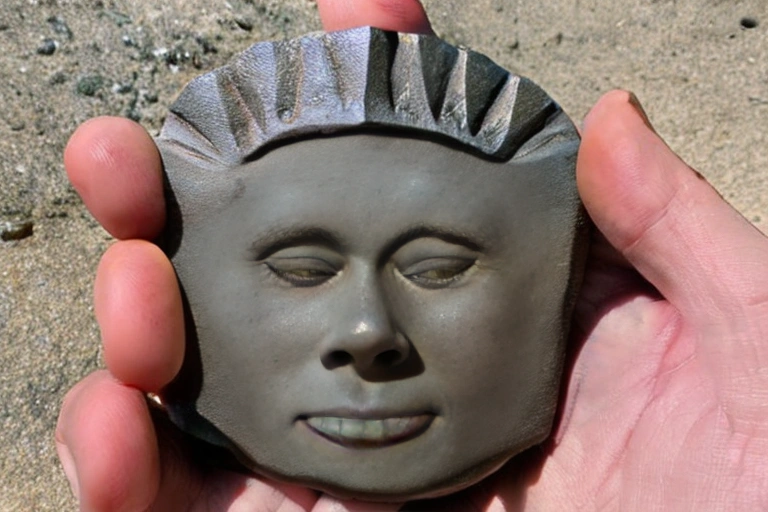
Investigating New Evidence Found Through Artifacts That Provide Insight Into this Mysterious Creature’s Existence
The Origin of the Sphinx
There is a great deal of debate as to when and where the Sphinx was first erected, with various theories proposing all sorts of different origins. One such theory suggests that it was constructed in ancient Egypt by the builders of the Great Pyramids. More recently, however, evidence has emerged which suggests that the Sphinx may have had a much earlier origin. This new evidence comes from artifacts which show that the creature has striking similarity to creatures found on Crete and Malta. If this is true, then it would suggest that the Sphinx may have been brought over from one of these locations at some point in history. However, despite this new evidence, there is still no definitive answer as to where or when the Sphinx was originally built.
An Overview of the Great Pyramids
Artifacts unearthed from the ancient Great Pyramids of Giza provide new evidence that suggests sphinxes may have been more than just creatures of legend and folklore. Fractures in some wall blocks near the pyramid’s base indicate they were struck by something heavy, most likely a human body. The discovery challenges long-held beliefs that Sphinxes only represent mythical creatures and not actual structures. With this newly discovered evidence, it is now possible to investigate whether or not sphinxes served as guards for the Pyramid Kings and Queens during their reigns over Egypt.
Ancient Egypt and its Connections to Greece
In the past few years, archaeologists have uncovered new evidence that suggests the sphinx may have originated in ancient Egypt. The evidence comes from artifacts that were found at the site of a former ancient Greek city in Turkey, which was known as Ephesus. The artifacts include a sculpture of a sphinx that is strikingly similar to the one found in ancient Egyptian tombs.
The discovery has led some experts to believe that the sphinx may have been an import from ancient Egypt. If this is true, it would provide further evidence that the creature was associated with ancient Egyptian culture and religion. It is also possible that the sphinx was inspired by the Egyptian god, Horus.
Whatever the case may be, it is clear that the sphinx has a long and mysterious history. It is an interesting example of how cultures can be connected through art and history.
Modern Reflections on a Timeless Monument
The Sphinx has been a symbol of mystery and intrigue for centuries, and its legacy stretches back to ancient Egyptian times. Despite being damaged over the years, new evidence has recently been discovered that suggests this monument may date back far earlier than originally thought. This research provides further insight into the sphinx’s mysterious history and its place within Egyptian culture.
While it is well known that the Great Sphinx was built in 2500 BC, recent discoveries suggest that it may have been erected even earlier – perhaps as early as 4000 BC! These findings support theories suggesting that the sphinx was a representation of Geb, one of the chief gods of Ancient Egypt. This suggests that the monument had religious significance rather than simply serving as a glorified sculpture.
In addition to its religious significance, the Great Sphinx was also a symbol of power and authority. Built on an imposing platform, it stood as a sentinel overlooking the surrounding area. It is likely that this placement was designed to remind visitors of the Pharaoh’s dominance over his kingdom.
Despite its impressive legacy, the Great Sphinx has been largely forgotten over the years. This is due in part to its deteriorated condition – which has resulted in damage to important parts of the monument – as well as its resemblance to a heap of rubble rather than a sculpture. However, efforts are being made to preserve and restore this iconic landmark for future generations to enjoy.
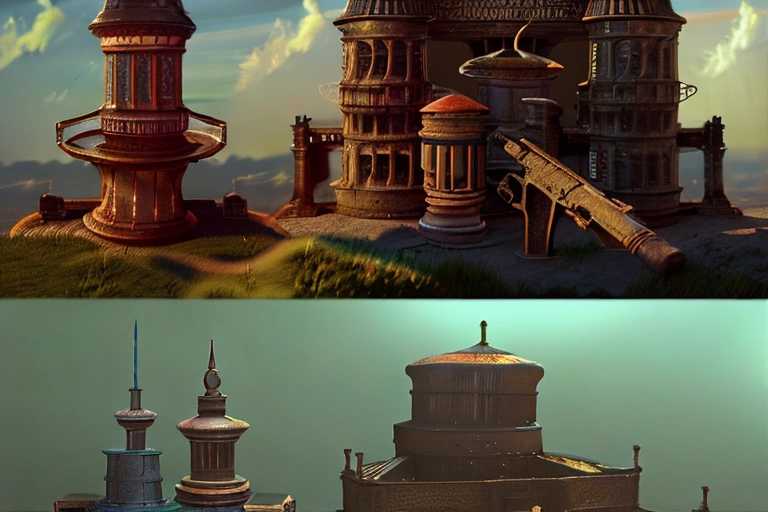
Investigating Present Day Interpretations And Relevancy Of Inscriptions Associated With Them
The Great Sphinx of Giza has always been a mysterious and awe-inspiring site. Its imposing form, sculpted from sandstone more than 4,500 years ago, still inspires today. People from around the world continue to search for clues about its purpose and meaning.
Despite numerous investigations and excavations dating back to the early 1900s, much remains murky about the monument’s origins and history. Recent scientific analysis of inscriptions found on and around the Sphinx sheds light on some important aspects of its past but also raises new questions that need to be further investigated.
One inscription in particular – a so-called “diagonal message”has generated considerable interest because it appears to hint at an ancient connection between Egypt and Nubia. The text seems to suggest that Khufu (2551-2614 BC), Pharaoh of Ancient Egypt during the Old Kingdom Period, sent an expedition led by a certain Menkaure (2493-2345 BC) into southern Nubia in order to quarry stone for his great pyramids at Giza. If this interpretation is correct, then it would constitute one of history’s most remarkable linked efforts between two such distant regions. However, further research is needed in order to confirm or reject this hypothesis.
The Sphinx and the Great Pyramids have a long and mysterious history that continues to fascinate us today. We have explored the ancient myth of the Sphinx, its significance in Egyptian culture, the history and development of the Great Pyramids, off-shoot religious beliefs connected to sphinx statuettes, and more. Through artifacts, inscriptions, and other evidence, we have gained insight into this mysterious creature’s existence. As we continue to explore this fascinating topic, it is important to remember that these symbols have held relevance for many cultures over time.
We hope you enjoyed this exploration of the Sphinx and the Great Pyramids! If you would like to learn more about other ancient mysteries and archaeological finds, be sure to check out our other content!

Shoptimizer Blog
Meditation williamsburg kogi blog bushwick pitchfork polaroid austin dreamcatcher narwhal taxidermy tofu gentrify aesthetic.
Humblebrag ramps knausgaard celiac, trust fund mustache. Ennui man braid lyft synth direct trade.


